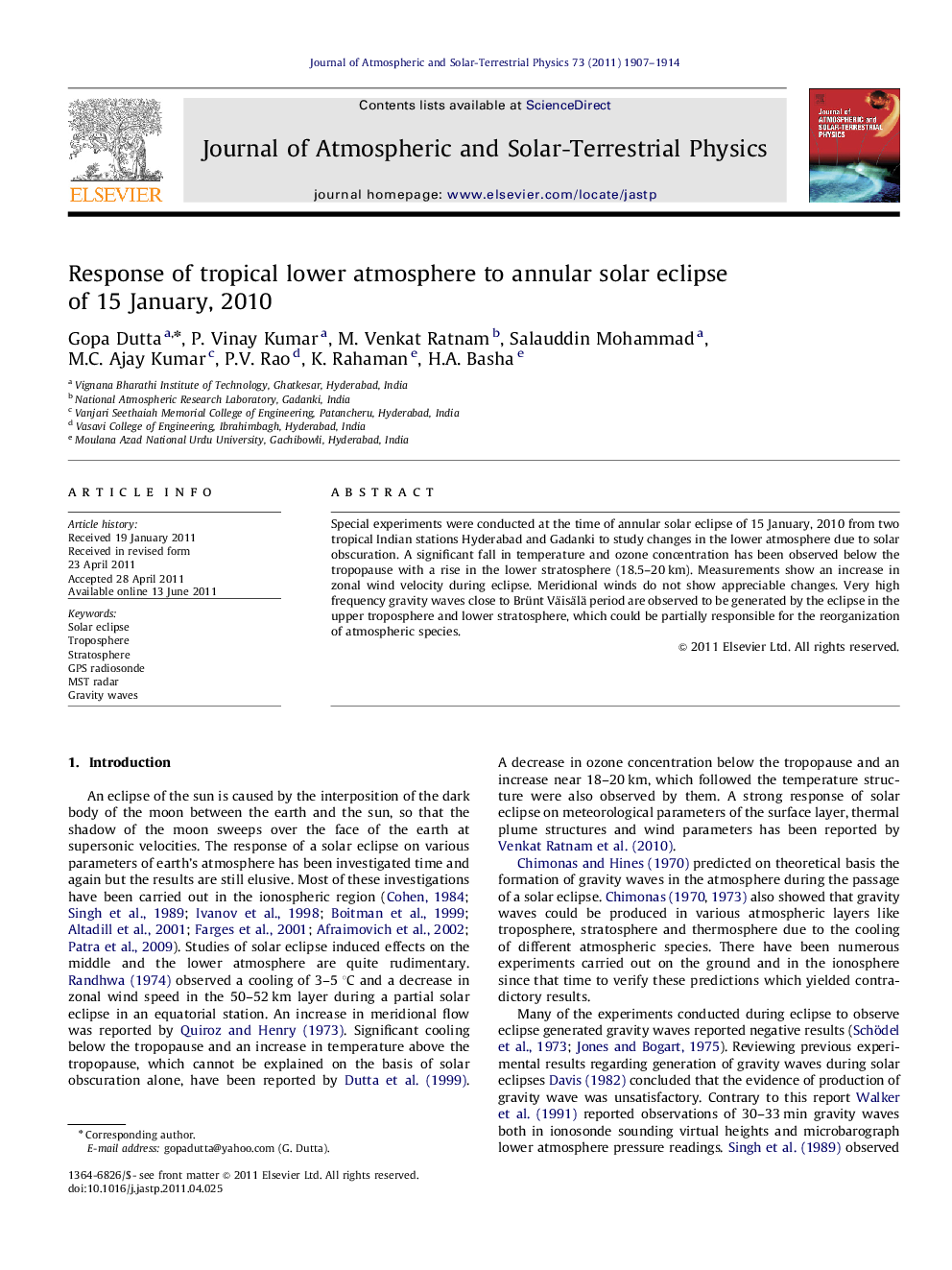| Article ID | Journal | Published Year | Pages | File Type |
|---|---|---|---|---|
| 1777117 | Journal of Atmospheric and Solar-Terrestrial Physics | 2011 | 8 Pages |
Special experiments were conducted at the time of annular solar eclipse of 15 January, 2010 from two tropical Indian stations Hyderabad and Gadanki to study changes in the lower atmosphere due to solar obscuration. A significant fall in temperature and ozone concentration has been observed below the tropopause with a rise in the lower stratosphere (18.5–20 km). Measurements show an increase in zonal wind velocity during eclipse. Meridional winds do not show appreciable changes. Very high frequency gravity waves close to Brünt Väisälä period are observed to be generated by the eclipse in the upper troposphere and lower stratosphere, which could be partially responsible for the reorganization of atmospheric species.
► The article documents the effects of an annular solar eclipse on lower atmospheric parameters like wind, temperature, ozone concentration. Continuous wind measurements have been used to confirm the generation of gravity waves during eclipse. ► Zonal wind is found to become stronger by ∼12–16 m/s in the upper troposphere. ► Decrease in tropopause height is observed during and after the eclipse. ► Fall/rise in temperature and ozone concentration is observed below/above the tropical tropopause. ► The study confirms the generation of very high frequency waves following the annular solar eclipse of 15 January, 2011.
